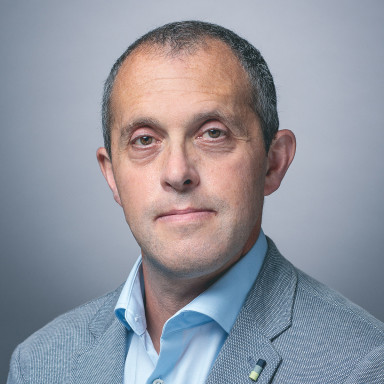Smith and Nephew’s first quarter sales grew by 3.1% on an underlying basis to $1.4bn. All divisions and territories were up except emerging markets which were held back by further pricing pressure in China.
The company remains confident of stepping up to meet full year sales growth guidance of 5%, supported by a high rate of planned product launches.
Trading profit margin is still expected to improve from 18.1% to 19-20%. This includes an expected impact from tariffs of $15mn-$20mn, or around 0.3 percentage points on the margin.
The shares rose 7.7% in early trading.
Our view
Smith and Nephew’s first-quarter sales came in better than expected, pleasing markets on the day. But with both growth and margin improvement guidance weighted towards the second half of the year, there’s still work to be done.
The company’s dropped the ball before while trying to execute its turnaround plan, and markets may be unforgiving if it does so again. The group hopes it’s seen the worst of the impact of unhelpful Chinese procurement policies, but with the scope extending into more product lines, it’s something we’re still wary of.
The medical device maker operates through three segments; Orthopaedics - offering hip and knee replacements, Sports Medicine - a soft tissue repair business, and Wound Management - providing materials to manage injuries and prevent infection.
The Orthopaedics division has been a problem child for the group, hampered by a lack of scale. Operational improvements have had some success in overseas markets and there are some early signs that this can be replicated in the US.
An ageing population and growing affluence in emerging markets are both tailwinds for surgical procedure growth. But Smith & Nephew is not just sitting and waiting for the market to drive its sales growth. It's continuing to develop and launch new products, cross-sell its wide product range across its territories, and introduce existing products into new areas of treatment.
We see innovation as its biggest weapon for gaining market share. The group’s negative pressure wound therapy products continue to evolve as management targets a multi-year growth opportunity. Its regenerative therapies for sports injuries are also seeing strong sales momentum.
Despite the structural growth opportunities, the group does face some challenges.
Rebuilding margins is proving harder than expected, largely due to the issues with China. Underlying operating margin targets have been kicked down the road several times and are materially behind the original recovery plan. The company looks relatively well prepared to deal with tariffs, setting out what it sees as a limited impact based on current rules. But with the picture changing so quickly, that may not be the end of it.
Market forecasts suggest a prospective yield of 3.1%, but as ever there can be no guarantees especially if business doesn’t accelerate as anticipated in the second half of this year. The valuation is some way below the long-term average, reflecting the group’s poor execution record of recent years. Sentiment is likely to remain fickle until Smith & Nephew consistently shows it’s making good on its promises.
Smith and Nephew key facts
All ratios are sourced from LSEG Datastream, based on previous day’s closing values. Please remember yields are variable and not a reliable indicator of future income. Keep in mind key figures shouldn’t be looked at on their own – it’s important to understand the big picture.
This article is not advice or a recommendation to buy, sell or hold any investment.No view is given on the present or future value or price of any investment, and investors should form their own view on any proposed investment.This article has not been prepared in accordance with legal requirements designed to promote the independence of investment research and is considered a marketing communication.Non - independent research is not subject to FCA rules prohibiting dealing ahead of research, however HL has put controls in place(including dealing restrictions, physical and information barriers) to manage potential conflicts of interest presented by such dealing.Please see our full non - independent research disclosure for more information.


